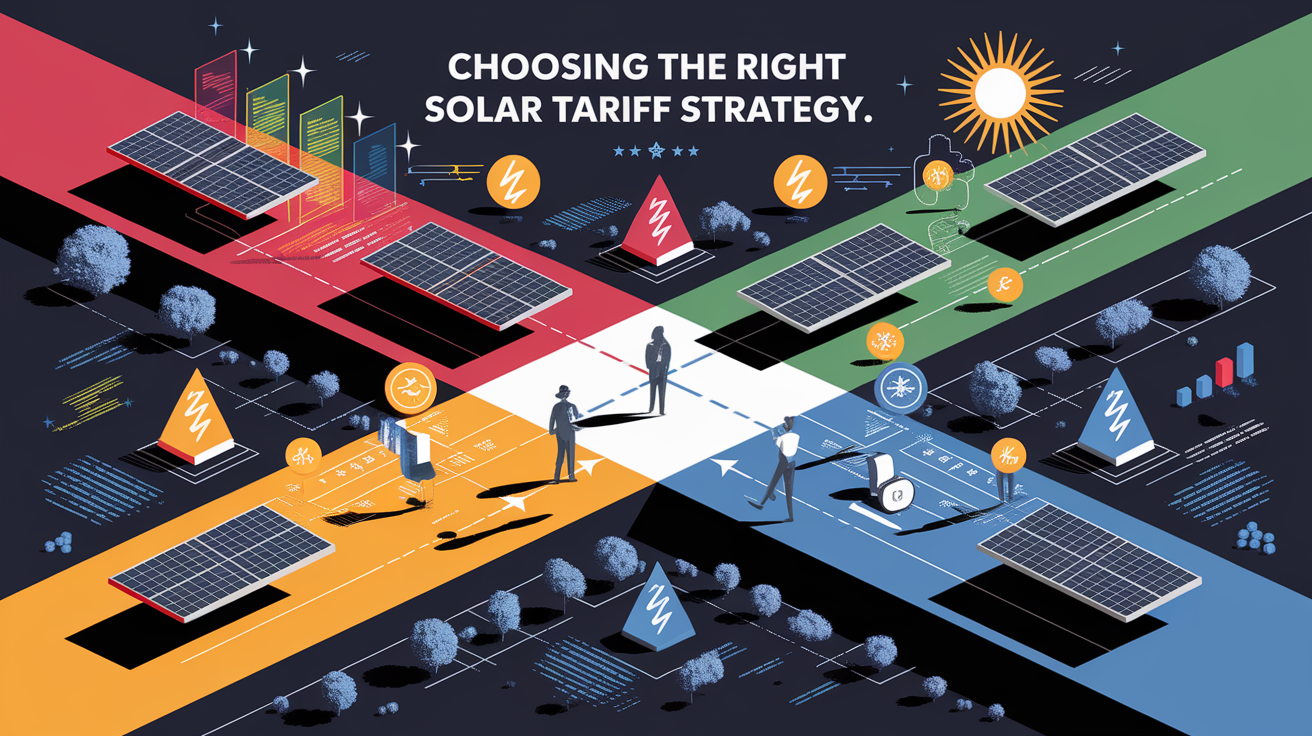Charge Ahead: Winning with Net Metering and Solar Tariff Tactics
Spark Your Solar Savings
For homeowners and businesses harnessing solar energy, two of the most powerful tools for maximizing return on investment are net metering and smart solar tariff strategies. Together, they can dramatically lower electricity bills, shorten payback periods, and boost the economic viability of your solar panel installation. Understanding these mechanisms allows you to match your solar power generation with the most favorable financial policies, creating a direct pathway to greater energy independence and reduced carbon footprint.

Whether you have a residential rooftop photovoltaic system or a large-scale commercial solar installation, the right approach can mean the difference between modest savings and transformative results. By blending policy knowledge with careful system sizing, you can capture every available dollar from your solar energy system while contributing reliably to a cleaner energy grid.
Decoding Net Metering Mechanics
Net metering is a simple yet effective billing mechanism that tracks the difference between what your solar panels produce and what you consume from the grid. When your grid-tied solar array generates more electricity than you need—often during midday peak production—this excess flows back into the utility grid. In return, your utility company grants you energy credits valued at an agreed rate per kilowatt-hour (kWh). Later, when your energy use exceeds production (like at night or on cloudy days), you draw from the grid and use those credits to offset costs.

The core benefits include:
- Reducing your electricity bill by offsetting expensive grid consumption with your own generation
- Accelerating your solar ROI calculation by increasing annual savings
- Support for distributed generation, reducing the need for new large-scale fossil fuel plants
However, as noted in analyses of net metering’s pros and cons, timing mismatches between peak solar output and peak household usage can reduce direct energy offset. In such cases, careful storage integration or tariff optimization becomes essential.
Choosing the Right Solar Tariff Strategy
Solar tariff structures define how much you’re paid—or credited—for the energy you export to the grid. The design of these tariffs directly impacts your financial outcome from net metering and can vary significantly by state, utility, and policy environment. According to the National Renewable Energy Laboratory, the most common tariff approaches include:

- Full Retail Rate Credits: Excess generation earns credits equal to the retail price you pay for electricity—highly favorable for solar owners.
- Avoided Cost Rates: Credits match the utility’s cost of generating or purchasing additional power—typically lower than retail.
- Wholesale Rates: Compensation mirrors wholesale market prices for electricity, often the least lucrative.
- Time-of-Use (TOU) Rates: Prices vary by time of day; aligning solar exports with high-rate periods can increase earnings.
These tariff mechanisms closely interlink with net metering policy design, shaping both adoption rates and long-term grid equity.
Maximizing Savings with Combined Tactics
To fully optimize your solar financial performance, combine net metering with tariff strategies targeted to your usage profile. For example:

- Install Energy Storage: Use battery backup to store midday excess instead of exporting at a low rate—then deploy during peak TOU cost periods.
- Shift High-Load Activities: Operate energy-intensive tasks like EV charging or laundry during peak solar generation hours.
- Monitor System Output: Leverage solar system monitoring tools to align consumption with production and track credit accumulation.
Strategic alignment of your energy use with both the technical performance of your photovoltaic system and your chosen tariff schedule can compound your financial benefits. Households that actively manage their demand profile often see solar payback periods reduced by 1–3 years, depending on location and tariff structure.
Shine On: Future-Proof Your Solar Strategy
Both net metering and solar tariff policies continue to evolve alongside technology and energy market needs. Emerging trends include value-of-solar tariffs that quantify all grid benefits from distributed renewable energy, as well as virtual net metering programs enabling renters and shared property owners to access renewable energy credits from community solar projects.
Key steps to future-proof your approach:
- Stay informed on state-level net metering policy changes and evolving credit rollover rules.
- Plan for energy storage integration to reduce exposure to less favorable export rates.
- Evaluate solar capacity factor and size systems to maximize annual self-consumption.
- Factor in potential utility interconnection criteria and policy shifts when choosing tariffs.
By staying proactive and informed, you position yourself to capture maximum economic value from your solar installation now and into the next decade of renewable energy transformation.







